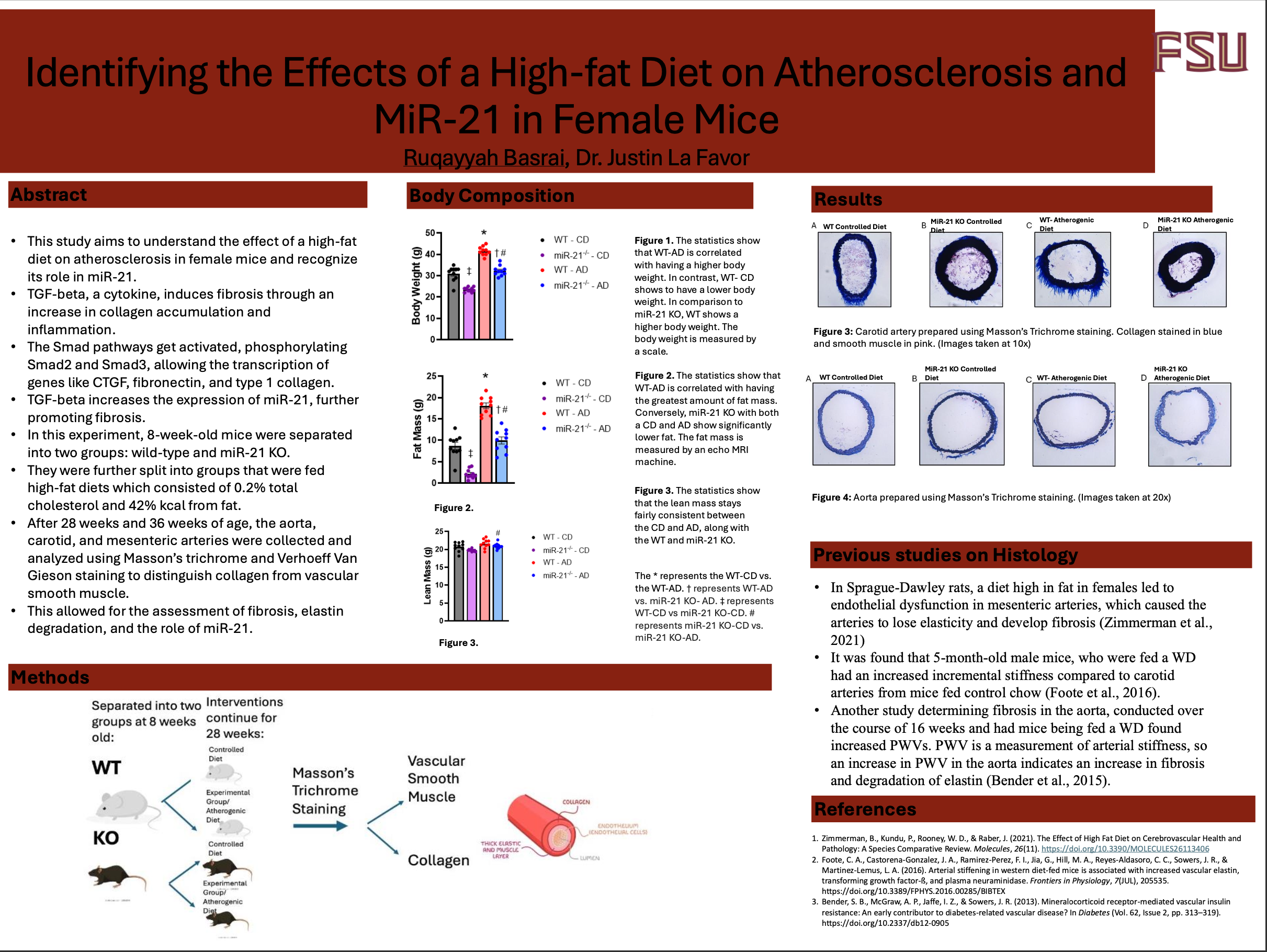Research Symposium
25th annual Undergraduate Research Symposium, April 1, 2025
Ruqayyah Basrai Poster Session 1: 9:30 am - 10:30 am/ Poster #208

BIO
My name is Ruqayyah Basrai and I'm a senior majoring in Exercise Physiology. I began doing research sophomore year of college and did research on the correlation between twins and literacy rate. I later found interest in learning about the effects of space on physiology in mice and began doing research on The Effects of Microgravity on Bone Density in Female Mice. This peaked my interest in cardiovascular physiology particularly in females and was the catalyst for changing my major to exercise physiology. From there, I began to learn more about cardiovascular physiology and found interest in my project now which is The Effects of a High-Fat Diet on Atherosclerosis and MiR-21 in Female Mice.
The Effects of a High-Fat Diet on Atherosclerosis and MiR-21 in Female Mice.
Authors: Ruqayyah Basrai, Dr. La FavorStudent Major: Exercise Physiology
Mentor: Dr. La Favor
Mentor's Department: Health, Nutrition, and Food Science Mentor's College: Health and Human Sciences Co-Presenters:
Abstract
The role of miR-21 in atherosclerosis in female mice is still being studied. The purpose of this study was to understand the effect of a high-fat diet on atherosclerosis in female mice and recognize its role on miR-21. Obesity, characterized by an increase in adipose tissue, leads to altered adipokine levels and contributes to atherosclerosis. TGF-beta, a cytokine, induces fibrosis through an increase in collagen accumulation and inflammation. This activates the Smad pathway, phosphorylating Smad2 and Smad3, allowing the transcription of genes like CTGF, fibronectin, and type 1 collagen. TGF- beta also increases the expression of miR-21, enhancing the stimulation of fibroblasts, further promoting fibrosis. The study highlights that many cascade pathways are involved in elucidating the role of miR-21 in fibrosis, such as TGF-beta/Smads, PI3K, and ERK, as well as inhibitors such as Smad7, PTEN, and Sprouty. Many studies show that a high-fat diet can lead to fibrosis and elastin degradation. In this experiment, 8-week-old mice were separated into two groups: wild-type and miR-21 KO. They were further split into a control group that was fed a standard diet, whereas the high-fat diet group was fed a diet that consisted of 0.2% total cholesterol and 42% kcal from fat. After 28 weeks, at 36 weeks of age, the aorta, carotid, and mesenteric arteries were collected and analyzed using Masson’s trichrome and Verhoeff Van Gieson staining to distinguish collagen from vascular smooth muscle. This allowed for the assessment of fibrosis, elastin degradation, and the role of miR-21 in these processes.
Keywords: Atherosclerosis, MiR-21, Female Mice


